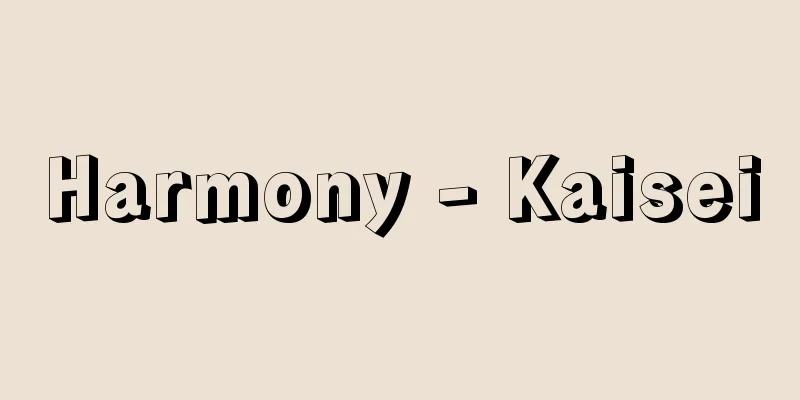Nishida tax - Nishida Mitsugi

|
He was a leader of young officers in the Showa Restoration and the movement to reform the nation. He was born on October 3, 1901 in Yonago, Tottori Prefecture, to a family that owned a Buddhist altar. He was influenced by Pan-Asianism while attending the 34th class of the Army Academy, and after reading Kita Ikki's "A Foreign History of the Chinese Revolution" and "Outline of a Bill for Reforming Japan," he became deeply involved in the cause. He explained the need for reforming the nation to his fellow academy student, Prince Chichibu Yasuhito, and presented him with "Outline of a Bill for Reforming Japan" and other works. He was commissioned as a second lieutenant in the cavalry in 1922 (Taisho 11), but retired due to illness in 1925 and was transferred to the reserves. He joined the Kochisha, headed by Okawa Shumei, and was in charge of editing the journal "Monthly Japan," while also working as a dormitory supervisor and military science lecturer at the university dormitory. In 1926, he came into conflict with Okawa and became a disciple of Kita Ikki, spending the rest of his life with him as Kita's faithful disciple. During this time, he had connections with many young officers, and held gatherings at his home in Yoyogi that he called "Shirinso." In July 1927 (Showa 2), he distributed documents such as the "Tenkento Constitution" and the "Tenkento Outline," and was interrogated by the Kempeitai. In the May 15 Incident of 1932, he refused to allow young army officers to participate in the planning, and was suspected of being a spy. On the 15th, he was shot with a pistol by Kawasaki Nagamitsu, a disciple of Inoue Nissho, at his home, leaving him critically wounded. He was implicated in the February 26 Incident of 1936, and was shot to death along with Kita Ikki on August 19th the following year. [Tatsuzo Ohno] "The Wives of the February 26 Incident" by Sawachi Hisae (1971, Chuokoron-Shinsha)" ▽ "Modern History Materials 23: Nationalist Movement 1 & 3" by Takahashi Masae (1974, Misuzu Shobo)" ▽ "The February 26 Incident and Young Officers" by Matsuzawa Tetsuya and Suzuki Masanori (1974, Sanichi Shobo)" [References] | | | | | |Source: Shogakukan Encyclopedia Nipponica About Encyclopedia Nipponica Information | Legend |
|
いわゆる昭和維新、国家改造運動における青年将校のリーダー。明治34年10月3日鳥取県米子(よなご)市の仏具屋の家に生まれる。陸軍士官学校34期在校中から大アジア主義の影響を受け、さらに北一輝(きたいっき)の『支那(しな)革命外史』『日本改造法案大綱』を読んでこれに傾倒、陸士同期の秩父宮雍仁(ちちぶのみややすひと)に国家改造の必要を説き、『日本改造法案大綱』などを贈呈した。1922年(大正11)騎兵少尉に任官したが、1925年病気のため退官、予備役に編入され、大川周明(おおかわしゅうめい)主宰の行地社(こうちしゃ)に入り、機関誌『月刊日本』の編集を担当、かたわら大学寮の寮監兼軍事学の講師となった。1926年大川と対立、北一輝の門下に走り、以後北の忠実な弟子として生涯をともにする。この間多数の青年将校と交わり、代々木の自宅の集まりを「士林荘(しりんそう)」とよび、1927年(昭和2)7月「天剣党規約」「天剣党大綱」などを配布して憲兵隊の取調べを受けた。1932年の五・一五事件では計画の途中で陸軍青年将校の参加を拒んだためスパイ視され、15日自宅で井上日召の弟子川崎長光に拳銃(けんじゅう)で撃たれ瀕死(ひんし)の重傷を負った。1936年の二・二六事件に連座、翌年8月19日北一輝とともに銃殺された。 [大野達三] 『澤地久枝著『妻たちの二・二六事件』(1971・中央公論社)』▽『高橋正衛解説『現代史資料23 国家主義運動1・3』(1974・みすず書房)』▽『松沢哲也・鈴木正節著『二・二六事件と青年将校』(1974・三一書房)』 [参照項目] | | | | | |出典 小学館 日本大百科全書(ニッポニカ)日本大百科全書(ニッポニカ)について 情報 | 凡例 |
<<: 20th Century Fox [company] - 20th Century Fox
Recommend
Kawachi Province
The old name of the province in the southeastern ...
Abeno Hironiwa - Abeno Hironiwa
Year of death: Tempyo 4.2.22 (732.3.22) Year of bi...
Amitzok gneiss - Amitzok gneiss
… [Oldest rocks] West Greenland is a shield made ...
Pottery with ink inscriptions - Bokushodoki
There are two types of pottery: pottery with char...
Declaration of Maritime Sovereignty
The area was established by the "Declaration...
Uzuchi - Uzuchi
〘Noun〙 In the Middle Ages, a mallet was offered to...
Princess Tamayori
(In ancient times, she was also called "Tamay...
Kazamian, L.
...However, some foreign literature scholars pref...
Sander, F.
…(2) Research on individual and group behavior Th...
Basic song - Suutai
A type of informal Noh performance. It is a perfo...
Noheji [town] - Noheji
A town on the southeast coast of Mutsu Bay in Kami...
Ethynylation - Echiniruka (English spelling)
Generally, this refers to a reaction to introduce...
Emperor Seiwa
Year of death: 4th December 19th, 881 (7th January...
High temperature corrosion
…The temperature at which a material becomes unus...
Ramanantsoa, G. (English spelling)
In 1972, the South African government was forced ...









